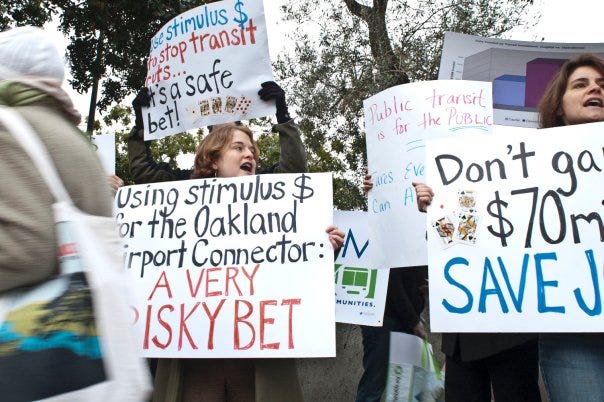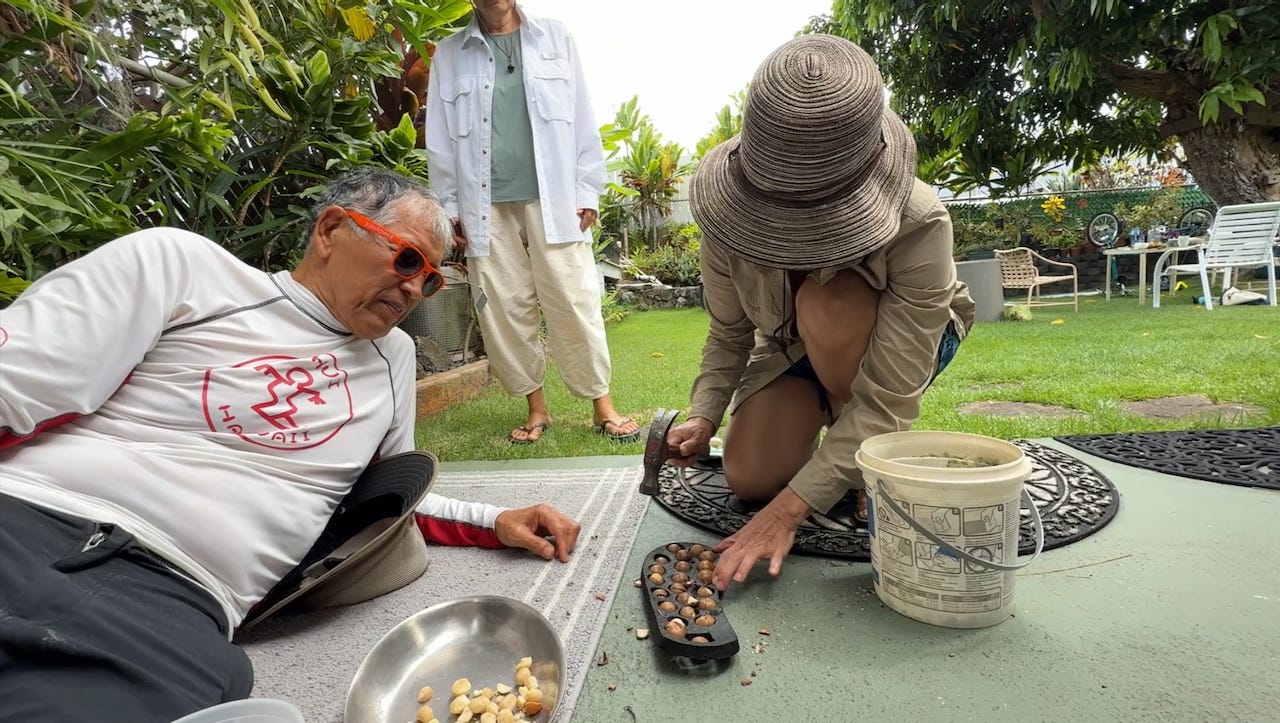Last weekend I had the pleasure of a ride to the Oakland International Airport on my way to a sweet summer vacation. My traveling companion asked about the elevated cable car that connects BART, the Bay Area’s commuter rail, to the airport. “How much time do you have?” I asked.
We had plenty, so she got the whole story of one of the most disappointing defeats of my organizing career. I’m sharing that lesson with you, along with a campaign planning workbook, to help you avoid the same mistake I made.
The “Oakland Airport Connector” began as a proposal by BART to build a 3.2-mile elevated train linking the Oakland Coliseum BART station to the airport. The initial projected cost of $134 million ballooned to $484 million by the time it was ready for construction, requiring BART to borrow $140 million from funds that had been allocated to maintenance and cleaning. I was hired to organize a campaign against the elevated train and in favor of a bus-based alternative that would have provided better service for much less cost. Our last chance to stop the project was at a committee meeting of our Metropolitan Planning Organization where five Commissioners would vote to approve or reject BART’s plan to borrow the money.
We counted our votes. We had two confirmed ‘no’ votes. We needed one more. Two Commissioners were likely ‘yes’ votes. That left one potential swing: a county Supervisor with ties to real estate and restaurants and mayoral ambitions in San Jose. Let’s call him “Dave” because that’s his name.
To dramatize the project’s wastefulness, we held a spectacular rally in a BART parking lot where we rented a wood chipper and fed it oversize bills of fake money. Watching millions of dollars get shredded made a great visual for TV and we got good coverage. But did this tactic impact Dave’s thinking about his vote? Nope.
Our mistake was not focusing on swaying Dave’s vote. We should have reached out to his constituents asking them to tell Dave to not waste their tax money. We should have talked to his real estate colleagues about how this project would do nothing for their land values while taking money from projects that might. We should have identified his campaign donors and people whose support he would need for a mayoral run and asked them to apply pressure.
We allowed ourselves to get distracted by a tactic that was clever and media-friendly, but ineffective for this fight. We didn’t aim at the target. In the end, Dave voted to approve the loan and we lost the vote. I hate losing.
Resource of the Week
To help you avoid that mistake, here’s a campaign planning workbook that will take you through the seven key elements of a winning campaign. It helps you define your issue carefully, set your goals, analyze your situation, identify your targets, and design communication and tactics to impact those targets.
I’ve taught hundreds of activists how to use this method to win. If you want help for you and your team, please reach out. I love winning, and I really love helping my dear fellow bike advocates win.





